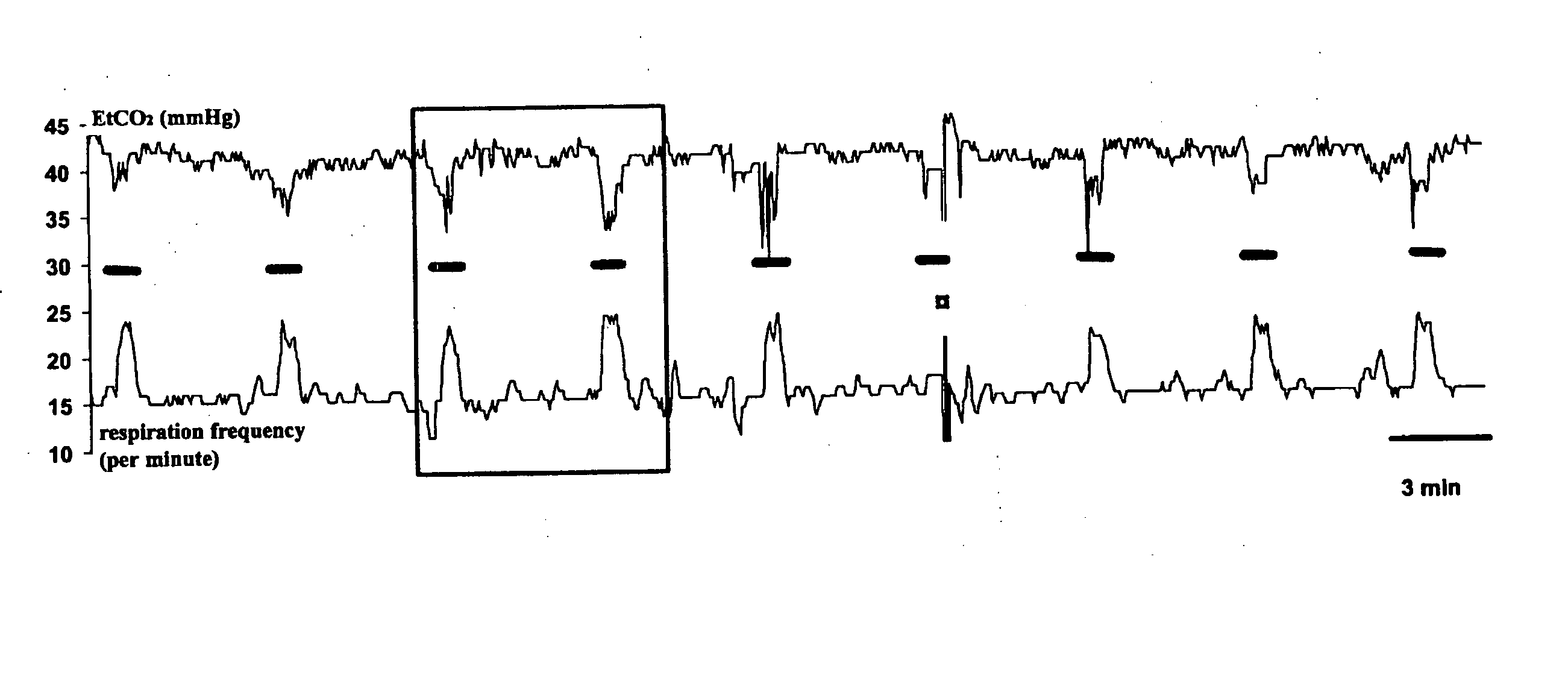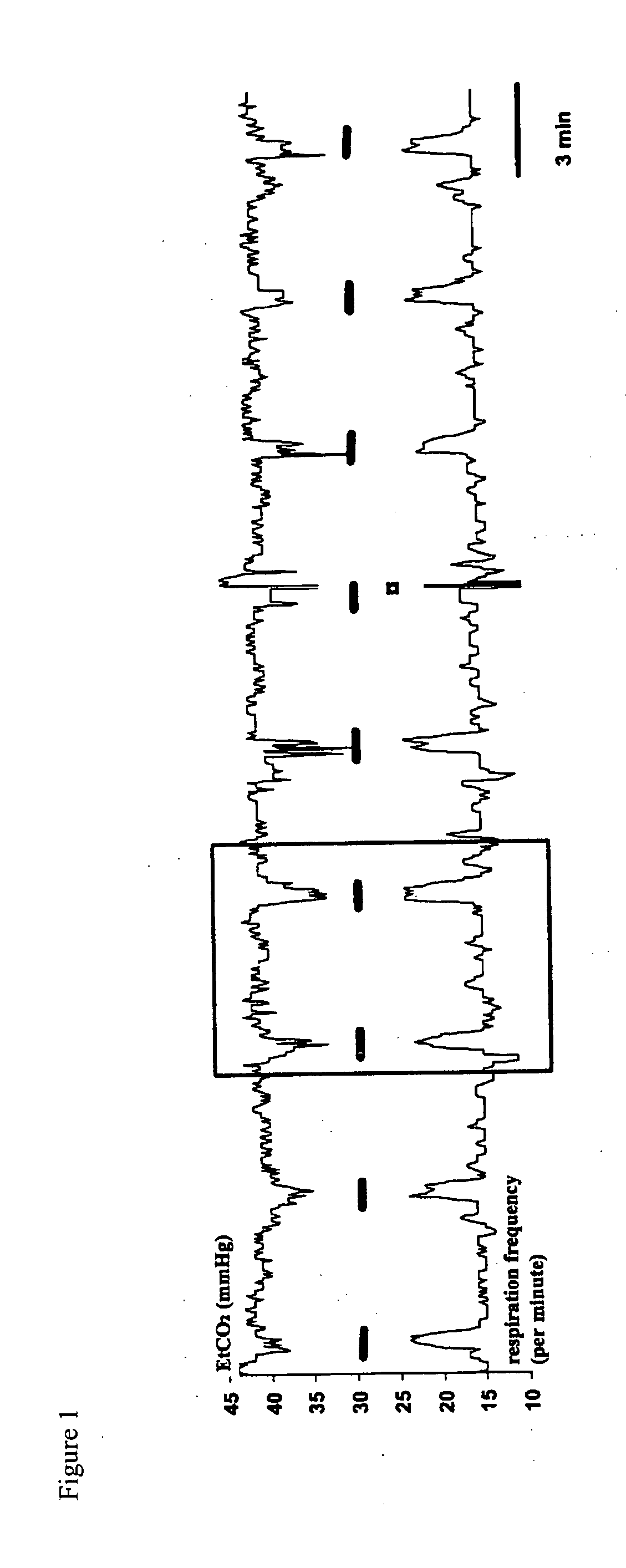Novel method for the adjustment of human and animal vagus nerve stimulation
a vagus nerve and adjustment technology, applied in the field of vagus nerve stimulation, can solve the problems of reducing heart rate, tingling of the neck and heart effects, and not responding to medical treatment for epilepsy patients
- Summary
- Abstract
- Description
- Claims
- Application Information
AI Technical Summary
Benefits of technology
Problems solved by technology
Method used
Image
Examples
example 1
[0036] Thirteen patients (mean age 39.5±11 years; range 19-55 years; nine men) with medically refractory seizures were treated with VNS (Cyberonics, Inc. Houston, Tex., U.S.A). The VNS stimulation parametres were as follows: current 1.50-3.25 mA, pulse duration 500 μs, frequency 30 Hz and on / off periods 30 s / 300 s. All subjects underwent polygraphic recordings during daytime sleep. Recordings included EtCO2 monitoring by capnograph (SIMS BCI INC., Madison, Wis., U.S.A.), electrocardiogram, electro-oculogram, nasal airflow monitoring by thermo-couple, and an eight channel EEG. Activation of the VNS device was monitored with the ECG leads placed so near the VNS device that the stimulation artifacts were clearly visible. The recordings were performed in two series. For the first series (n=9), EtCO2 levels and respiration frequency (both measured by capnograph) were collected with a 12-s sampling interval. Another series (n=7) were recorded with a shorter sampling interval and a separat...
example 2
[0039] According to the present invention adjusting vagus nerve stimulation parameters in order to achieve optimal stimulation effectiveness with regard to the desired therapeutical effect and with minimized side effects may be carried out as follows.
[0040] The stimulation parameter or parameters, such as current, pulse duration or any parameter that affects the effectiveness of vagus nerve stimulation, are initially adjusted to a low level. While monitoring, for example, EtCO2, preferably during sleep for easy elimination of conscious control of respiration, the stimulus parameter value or values are increased stepwise during intervals between individual stimulation periods. For example, current is increased in steps of 0.5 mA. This procedure is continued until a change in one or more respiration parameters, such as EtCO2, respiration rate, respiration frequency, respiration amplitude, or any parameter reflecting respiration or acid base status, is observed. For example, if EtCO2 ...
PUM
 Login to View More
Login to View More Abstract
Description
Claims
Application Information
 Login to View More
Login to View More - R&D
- Intellectual Property
- Life Sciences
- Materials
- Tech Scout
- Unparalleled Data Quality
- Higher Quality Content
- 60% Fewer Hallucinations
Browse by: Latest US Patents, China's latest patents, Technical Efficacy Thesaurus, Application Domain, Technology Topic, Popular Technical Reports.
© 2025 PatSnap. All rights reserved.Legal|Privacy policy|Modern Slavery Act Transparency Statement|Sitemap|About US| Contact US: help@patsnap.com


